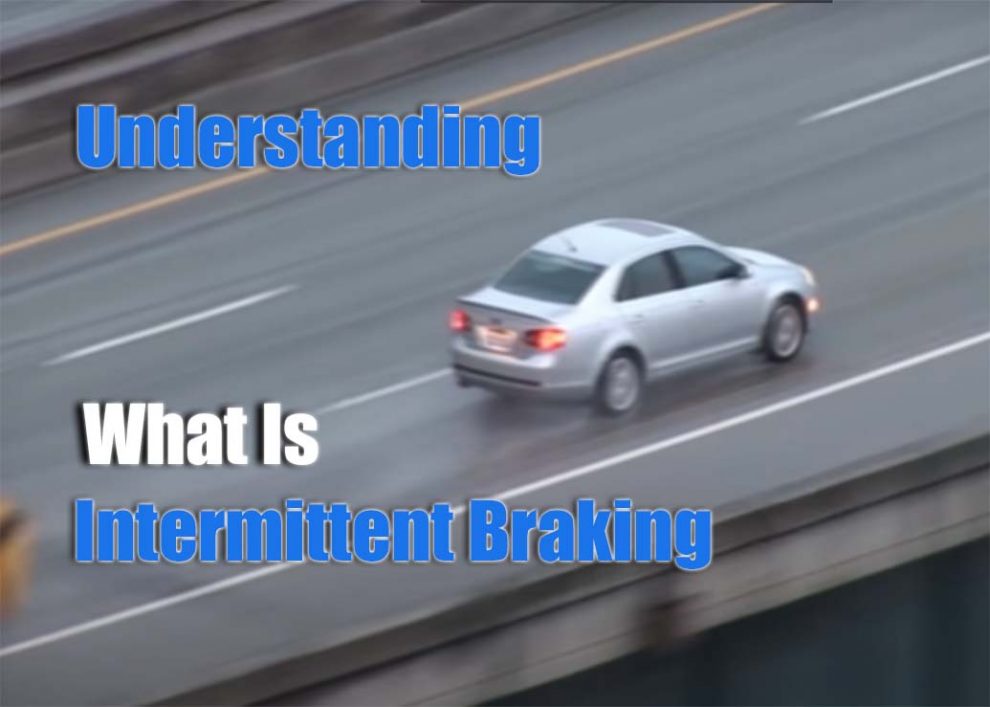Braking systems are a cornerstone of vehicle safety, with various methods and technologies developed over the years to ensure maximum efficiency and reliability. One such method that has garnered attention in recent times is intermittent braking. Through this article, we’ll demystify intermittent braking, shedding light on its functionalities, reasons for its growing popularity, and the situations in which it proves most beneficial.
Basics of the Braking System
At the heart of every vehicle lies its braking system, a crucial component designed to halt a car or reduce its speed on command. Comprising parts such as brake pads, discs, and the pedal itself, the system operates on a principle of creating friction to slow down the vehicle. As automobiles evolved, so did their braking systems. Newer methods were introduced, addressing the limitations of their predecessors, leading to safer, more efficient braking solutions. Intermittent braking emerged as one such advancement, offering a different approach to halting vehicles, especially under challenging conditions.
Intermittent Braking Explained
Intermittent braking, as the name suggests, isn’t about constant brake application. Rather, it involves periodic, controlled brake applications in rapid succession. This technique is mainly designed for challenging road scenarios, like wet or icy terrains, where continuous braking could increase the risk of skidding or losing control. By applying the brakes intermittently, the system ensures the tires retain their grip, offering improved control and safety. As modern vehicles incorporate advanced safety features, intermittent braking has become a noteworthy inclusion, particularly for its contribution to road safety.
Benefits and Drawbacks of Intermittent Braking
Intermittent braking offers certain advantages and challenges to drivers. Here’s a breakdown:
Benefits:
-
Reduced Skidding Risk: The method significantly decreases the possibility of skidding, especially on wet or icy roads, since the wheels don’t lock up.
-
 Better Vehicle Control: Provides enhanced control over the vehicle, particularly during unfavorable weather situations.
Better Vehicle Control: Provides enhanced control over the vehicle, particularly during unfavorable weather situations. -
Extended Brake Life: The intermittent application can reduce wear on brake components, leading to prolonged intervals between maintenance sessions.
Drawbacks:
-
Learning Curve: Adapting to intermittent braking might require time, especially for drivers used to traditional methods.
-
Less Intuitive for Some: Some drivers might find the intermittent method counterintuitive, leading to hesitations during its application.
Comparison with Other Braking Methods
When contrasting intermittent braking with other techniques, it’s vital to understand their foundational principles. Traditional braking relies on a steady application of pressure, which can sometimes lead to wheel lockup, especially on slippery surfaces. On the other hand, anti-lock braking systems (ABS) use a mechanism somewhat similar to intermittent braking. ABS prevents wheel lockup by rapidly pulsating brake pressure. While ABS and intermittent braking share similarities, their execution differs. Intermittent braking is more of a driver’s technique, while ABS is an automated system incorporated into modern vehicles.
Conclusion
Grasping the concept and advantages of intermittent braking is crucial for modern drivers. As road conditions and vehicle technologies evolve, being familiar with multiple braking methods ensures safer driving practices. While intermittent braking might not replace traditional methods, its added layer of safety, especially in challenging terrains, makes it an essential tool in a driver’s arsenal. For vehicle enthusiasts interested in optimizing their car’s performance, it’s worth noting that the Best cold air intake for Nissan Altima can make a marked difference – delve into our other article for more details on that. Safe driving practices combined with knowledge of vehicle mechanics lead to an overall enhanced driving experience.


 Better Vehicle Control: Provides enhanced control over the vehicle, particularly during unfavorable weather situations.
Better Vehicle Control: Provides enhanced control over the vehicle, particularly during unfavorable weather situations.
Add Comment